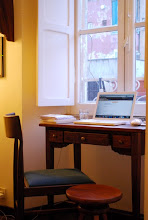
In sharp contrast to the countryside, Sicilian towns are pretty, well, mental. Palermo especially, where we began our trip, is a strange old place with a very middle-eastern/Spanish feel.



Syracuse, in contrast, at the other end of the trip, was an altogether more refined place. The oldest part of town is on the island of Ortygia, sticking out into the bay, and again has a middle-eastern feel to it, but is distinctly posher than Palermo.


The beautiful Fonte Aretusa, originally Greek in date, is probably the best fountain we've ever seen, complete with tonnes of fish and its own white ducks and papyrus plantation. The original Greek settlers of Syracuse linked this fresh-water fountain to the water nymph Arethusa who had leapt off the Peloponnese in Greece to escape an over-friendly river god and popped up here across the sea.

The ancient city of Syracuse was much larger than the modern one and lots of the ancient ruins are on the mainland to the north of Ortygia. These include the huge theatre, where they were preparing for a season of plays while we were there, and the ancient stone quarries, now full of lemon trees. The huge church of Santa Maria delle Lacrime in the modern town can be seen from everywhere in the city and houses a statue of the Madonna which is said to have wept for five days in 1953.



Last, but not least, of the big cities we visited was Catania, huddling under Mount Etna. The whole city is built of black volcanic rock and has been almost totally destroyed by earthquakes and eruptions on more than one occasion. In terms of bars, restaurants and markets Catania was probably the best place we went; we had a great dinner the night we were there on a street entirely lined with BBQs.



The final stop before we returned to the mainland was fancy Taormina, famous for its incredible Greek/Roman theatre with its views of Etna. The beach below the city, either side of the appropriately named Isola Bella, was very pretty - and, much to Rachel's joy, accessible by cable car.





No comments:
Post a Comment